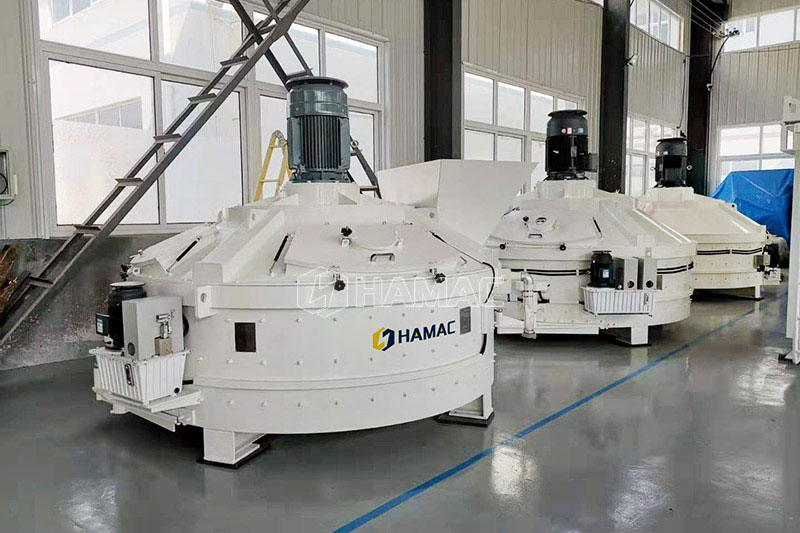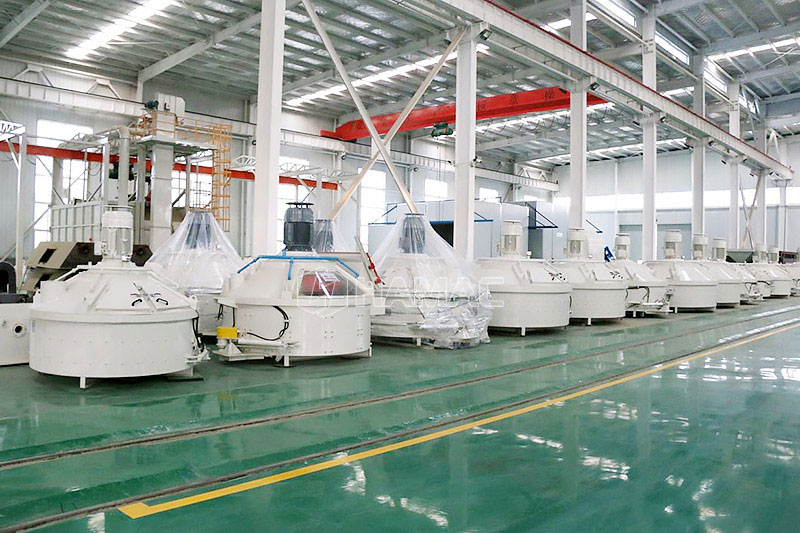The Concrete Mixer Truck: A History
The Concrete Mixer Truck: A History
People often think of a concrete mixer truck as being an industrial-sized truck equipped with a cylindrical drum to prevent wet concrete from drying out as it travels to its final destination, but its history dates back much further than this.
The first concrete mixer trucks were horse-drawn carts used to transport ingredients for concrete from their mixers directly to their job sites. Mechanical concrete mixers first emerged during the late 1800s, with motorized versions not becoming widely available until early 1900s.
Today, concrete mixer trucks have become an indispensable element of modern construction projects. Ranging in size and shape from compact models to larger vehicles that transport concrete around the world for job sites to access a concrete mixer truck is likely part of any successful construction endeavor. From home improvements to large scale developments a concrete mixer truck may even play a part!
- Creation of the Concrete Mixer Truck | 2 Early cement mixers were horse-drawn or steam powered chaudiere The first motorized mixer truck appeared in 1907
Once constructed, widespread use began in construction projects during the 1920s
- Development of Rotating Drum Mixers in the 1930s
6 Hydraulic Concrete Mixer Truck Unveiled in the 1970s 7 Today’s Mixers Are Electric, Hybrid or Natural Gas-powered

Development of the Concrete Mixer Truck
The first concrete mixer truck was first invented in the early 1900s. This truck consisted of a cylindrical drum on an axle which rotated with concrete being added by paddles while moving. At first powered by steam engines and later by internal combustion engines.
The first concrete mixer truck was developed during the early 1900s. This truck featured a cylindrical drum attached to an axle which rotated as it filled with concrete from a paddle placed inside of it, providing constant mixing as the truck moved. At first powered by steam engines but eventually switching over to internal combustion engines.
Since their humble beginnings, concrete mixer trucks have come a long way. Nowadays, there are numerous types and sizes of concrete mixer trucks on the market used for various purposes – transporting concrete between batch plants and job sites as well as mixing on-site concrete mixing. There are even different models with their own special set of features to consider when choosing one for yourself.
Early Cement Mixers: Horse-Drawn and Steam-Powered [sources of early cement mixers: horse-drawn and steam powered.
Early cement mixers were horse-drawn and powered by steam. Although these primitive machines were relatively slow and could only produce small batches at a time, they proved indispensable tools in construction projects.
Horse-drawn mixers were carts equipped with rotating drums pulled by horses. As these carts passed along a construction site, the drum would mix the concrete as it rotated. Steam-powered mixers operated similarly but instead of being pulled by horses they used steam engines as power source.
Early mixers had their own set of disadvantages: horse-drawn mixers were slow and required a lot of manual labor; steam-powered ones were faster but potentially deadly; should their engine explode, serious injuries or even deaths might result.
Though horse-drawn and steam-powered cement mixers had their limitations, they played a critical role in early construction projects – without them many of the buildings and structures we take for granted today would never exist.
First Motorized Concrete Mixer Truck (1907)
To properly understand the history of concrete mixer trucks, one must first understand their predecessor: William Newton of Columbus, Ohio patented his concrete mixer in 1845 – but only 1907 saw its motorization.
In 1907, London-based concrete machinery & Supply Co. created the world’s first motorized concrete mixer truck equipped with four-wheel drive power and equipped with a 3 cubic yard mixing drum – it was intended to be used on construction sites where concrete was being used as construction material.
The inaugural motorized concrete mixer truck proved immensely successful and led to subsequent motorized concrete mixer truck designs. In 1909, the U.S. Patent and Trademark Office awarded George W. Jackson of Buffalo, New York a patent for his design of an automobile-powered concrete mixer truck equipped with both an operator cab and platform to hold the mixer.
Putzmeister created the world’s first concrete mixer truck equipped with a diesel engine in 1912. It featured a 5-cubic yard mixing drum.
Development of the concrete mixer truck continued in the United States. Wayne Works created its inaugural rotating drum-equipped concrete mixer truck in 1916; this truck could accommodate 6 cubic yards.
The development of the concrete mixer truck continued both in America and Europe. In America, these trucks were widely employed during construction of Panama Canal while in Europe they were utilized for building Channel Tunnel.



Widespread Use in Construction in the 1920s
Today, concrete mixer trucks can be found everywhere from construction sites around the world to road projects in various countries. Their first appearance came about during the early 1900s before their widespread usage became a trend during construction in the 1920s.
Prior to the invention of the concrete mixer truck in 1916 by George Concannon, concrete was mixed by hand using a wheelbarrow. This tedious and time-consuming method required mixing ingredients at various proportions by eye; and would often lead to inconsistent mixes due to variations between ingredients. George’s truck enabled users to mix concrete on job sites rather than having to transport it from a central location first invented it in 1916 by George.
Concannon’s truck was an innovative breakthrough, but it wasn’t alone. By the early 1920s, several other companies had begun manufacturing concrete mixer trucks too – one such manufacturer being James Streeter who invented his Volumetric Concrete Mixer which measured ingredients by volume rather than weight for easier use.
Concrete mixer trucks were an immense breakthrough for construction projects, enabling projects to be completed faster with far less labor input required and creating concrete structures of all shapes and sizes. Today, concrete mixer trucks remain an indispensable element of construction industry operations and their use is only projected to increase in coming years.
Development of Rotating Drum Mixers in the 1930s
Prior to 1930, concrete was mixed on site using a stationary mixer, then transported via wheelbarrows for transport to job sites. As an improvement on this method of mixing, concrete mixer trucks with rotating drum mixers were introduced allowing much quicker and more efficient transport and mixing processes.
George Bartholomew invented the first concrete mixer truck in 1930 as part of his efforts as a mason contractor to more efficiently transport and mix concrete. His invention revolutionized the concrete industry, revolutionizing how it’s mixed and transported today.
The concrete mixer truck revolutionized concrete mixing and transportation. Not only could it quickly transport it, but its uniform mix led to better quality products. It has had an immense influence on construction industry development worldwide as well.
Hydraulic concrete mixer truck unveiled in the 70s
In the early 70s, concrete mixer trucks underwent a major transformation when hydraulic models became the industry standard. These new vehicles offered more power and efficiency compared to previous types.
The hydraulic concrete mixer truck represented an enormous advancement over its predecessors – mechanical models. Equipped with a hydraulic pump that supplied power for operation of the mixer, this new truck enabled higher mixing speeds due to more powerful pumps – leading to more efficient concrete mixing processes overall.
Hydraulic concrete mixer trucks quickly became the industry standard and remain one of the most frequently-used types of mixer trucks worldwide. Construction companies utilize them as essential tools in the construction process.
Today's Mixers Are Electric, Hybrid or Natural Gas-powered
As of 2019, there are three primary types of mixer trucks on the market. Electric trucks use batteries which require regular charging; hybrid models incorporate both an electric motor and gasoline engine; while natural gas-powered trucks feature engines powered by natural gas instead.
Electric
Electric mixer trucks have become more and more popular due to their environmental friendliness and lower operating cost than other types of mixer trucks. Unfortunately, electric trucks typically have shorter range than other varieties and may need charging during longer jobs.
Hybrid
Hybrid mixer trucks provide an attractive middle ground between electric and natural gas-powered mixer trucks, offering longer range than electric models and greater environmental friendliness than natural gas models. Unfortunately, they may be more costly to maintain.
Natural gas-powered
Natural gas-powered mixer trucks are the most widely used type of truck. They have longer range than electric and hybrid mixer trucks and cost less to run, yet emit harmful emissions into the environment.
Modern concrete mixer trucks have come a long way since their early origins, and show no sign of slowing down anytime soon. Thanks to constant innovations and improvements being implemented into them, concrete mixer trucks will likely play a vital role in construction for years to come.
Select and purchase the concrete pump machine best suited to you.
As soon as your research and understanding of concrete pump machines have been complete, it’s time to make a decision and purchase one that best meets your needs. Here are a few considerations which should help guide your choice:
First and foremost, consider what type of project you’re undertaking. Different machines have been specifically designed to suit various applications, so selecting one suitable to your task should be paramount.
The size of the machine should also be taken into consideration, since there are both small and large concrete pump machines available; you should carefully choose one suited to your specific needs.
Price should also be an important consideration, with different models offering various prices and ranges. When setting a budget for purchasing concrete pump machines, find one which meets it and adhere to it as closely as possible.
Consider quality when purchasing your machine, making sure that it will stand the test of time and serve its intended purpose.
